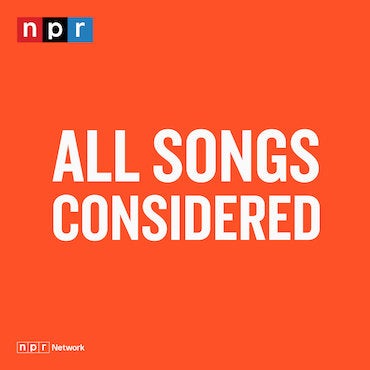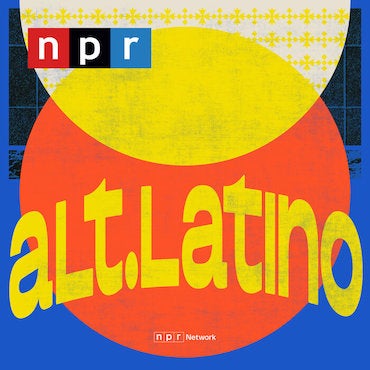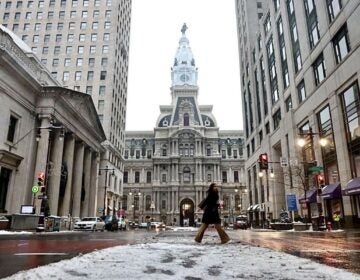Even police are surprised by what a radar gun finds on Henry Ave. and Kelly and Lincoln drives
On Feb. 21, legendary La Salle University basketball coach Speedy Morris was driving home though Northwest Philadelphia when he found himself delayed in a bumper-to-bumper traffic jam.
Earlier that day, he had been down at the Palestra from the Big 5 Hall of Fame luncheon. There, he ran into noted basketball player, coach and mentor Alonzo Lewis. They weren’t close friends, but he recalled Lewis joking something to the tune of “they’ll let anybody in here.”
While stuck in traffic for an estimated 45 minutes, he did not know what caused the delay.
It wasn’t until later that night that he heard someone had been killed at the School House Lane intersection, and that the victim was Lewis, the 77-year-old basketball star who was going to watch a relative play at Philadelphia University.
“He was a great man, a great player, a great man. I had a lot of respect for him,” Morris recalled Thursday. “I was devastated.”
Soon, Lewis would become the face of a neighborhood’s struggle with unsafe driving on its congested streets.
A well-known speedway
For anyone who has ever traveled Henry Avenue or Lincoln and Kelly Drives, the fact that reckless, speeding drivers abound on those three thoroughfares is not news.
They are often autobahns where speed-limit signs are mocked with impunity. The sight of vehicles driving 25 miles an hour on Lincoln and 35 on the other two are beyond rare. Those letter-of-the-law drivers are outliers who, considering the setting, find themselves in danger at the whims of an aggressive traffic flow.
It’s a battle that residents of East Falls and members of its Community Council have fought for years.
Theirs is an effort that took on tragic importance, and prompted an “emergency meeting” when Lewis was fatally struck, which amplified concerns stemming from a fatal head-on collision in Roxborough a week earlier.
It’s a fight that continues today, as they debate the safety merits of a traffic roundabout at that same location amid a looming PennDOT traffic study.
While the motives are clear, the specifics have not yet fallen into place.
With that ongoing struggle in mind, NewsWorks set out to get some tangible evidence.
Much like Lewis became the human face of pedestrian dangers on Henry Avenue, we rented a radar gun and set up shop along all three roads at various points throughout the week of Sept. 10.
What we found surprised even officials of a police department charged with patrolling the city’s neighborhoods.
No radar for the PPD
When it comes to catching speeders, what can and can’t be done by local and state police is spelled out in Part III, Chapter 33, Subchapter F, section 68 of the Pennsylvania Vehicle Code.
All police officers in the state are authorized by law to catch speeders by using their vehicle’s dashboard speedometer. Contrary to popular belief, however, only Pennsylvania State Police are authorized to use radar.
As demonstrated by a traffic officer who happened upon a NewsWorks “checkpoint” at Lincoln Drive and Gypsy Lane on Sept. 14, officers in areas not patrolled by troopers must use speed timing devices.
Those two silver switches sitting near the cruiser’s console measure elapsed time on a road surface by using sensors to calculate average speed between two points.
The officer did not seem taken too far aback when we clocked, in an unscientific study, roughly 70 percent of the vehicles at 9 or more miles an hour over the speed limit.
“They even drive like this in the rain,” the officer said not 50 yards from pieces of a bumper sitting on the side of Lincoln Drive. “We see the damage, and then they try to tell use they were only driving 25.”
He didn’t even laugh at the absurdity of his vignette, likely because he’s seen enough roadway carnage to warrant a remake of the “Blood Runs Red on the Highway” driving-school scare-tactic film.
google.load(‘visualization’, ‘1’, {packages: [‘corechart’]});
function drawVisualization() {
// Create and populate the data table.
var data = google.visualization.arrayToDataTable([
[‘Speed’, ‘< 5 MPH over limit', '5-14 MPH over', '15-24 MPH over', '25-34 MPH over','35-44 MPH over', '45+ MPH over'],
['Henry Ave. (35MPH)', 25, 53, 20, 2, 0, 0],
['Kelly Drive (35MPH)', 5, 26, 57, 12, 0, 0],
['Lincoln Drive (25MPH)', 0.1, 4, 45.5, 45.5, 4, 1],
]);
// Create and draw the visualization.
new google.visualization.ColumnChart(document.getElementById('visualization')).
draw(data,
{title:"Cars' speed relative to the speed limit",
titleTextStyle: {color: 'white', fontName: 'arial', fontSize: 16},
width:600, height:400,
vAxis: {title: "Percentage of cars",titleTextStyle: {color: 'white'},textStyle: {color: 'white', fontName: 'arial', fontSize: 12}},
hAxis: {title: "Road (Speed Limit)",titleTextStyle: {color: 'white'},textStyle: {color: 'white', fontName: 'arial', fontSize: 12}},
colors:['#a5c580','#fefa96','#FF9900','#DC3912','darkred','#999999',],
backgroundColor: '#403f41',
legend: {position: 'right', textStyle: {color: 'white', fontSize: 12}},
chartArea: {left:100,top:50, width:"55%",height:"70%"},
}
);
}
google.setOnLoadCallback(drawVisualization);
NewsWorks radar-checkpoint locations
NewsWorks spent roughly 10 hours at six different locations, primarily during morning and afternoon rush hours.
There were three locations on Henry Avenue, which is the focus of East Falls’ residents concerns.
One was located in the bend between Coulter Street and Warden Drive, another was on the west side of the bridge that goes over Lincoln and a third was at Bowman Street. The bridge location was manned one morning; the other two garnered morning and afternoon visits.
The Kelly Drive radar location, occupied during the afternoon rush, was near the parking lot between the Columbia Railroad and Strawberry Mansion bridges.
On Lincoln Drive, monitored in the morning, the radar gun worked Gypsy Lane (in the Wissahickon Hall parking lot) and a pull-off area on the other side of the street closer to Forbidden Drive.
Shocking results
In all, the speed of an estimated 700 cars was recorded by a two-reporter team.
Of those, 174 vehicles were driving within 9 miles an hour of the speed limit while 297 vehicles were driving more than 50 miles an hour.
Two vehicles were going over 70; one was a motorcycle on Kelly Drive which made a sedan traveling 43.8 mph look as if it was parked while the other was a black, two-door Honda Accord. It passed a 25 mile an hour sign going 71.6 mph.
The top speeds by location, in ascending order, were:
• Henry Avenue between Coulter and Warden (35 mph zone): Hyundai Santa Fe, 52.4 mph
• Henry Avenue at Bowman St. (35 mph zone): Pontiac Firebird, 60.4 mph
• Henry Avenue at the bridge northwest of Philadelphia University’s campus (35 mph zone): Lexus SUV, 64.6 mph
• Kelly Drive, near the Columbia Railroad Bridge (35 mph zone): a white SUV, 68.7 mph; a motorcycle surpassed that, but the speed gun could not get trained on it before it was gone
• Lincoln Drive at pull-off spot (25 mph zone): Dodge Ram 1500 pickup, 68.1 mph
• Lincoln Drive at Gypsy Lane (25 mph zone): black Honda Accord, 71.6 mph
Among the top speeds registered — but weren’t the fastest at their location — were a Hyundai Santa Fe (67.6 mph) and black BMW (67.2) traveling toward Center City on Lincoln within seconds of one another, a Mercedes Benz sportscar traveling the other direction on Lincoln (67.0) and a Nissan sedan and red Dodge Caravan, both of which clocked 65 miles an hour along Kelly Drive.
In all, one vehicle was going more than 65 mph each hour the NewsWorks radar was alongside the road.
Other notable vehicles included:
• A white Subaru Outback: 31.8 (the lowest on Lincoln)
• An Ace Driving School vehicle: 34.8 (heading toward East Falls on Kelly Drive, moments before being passed by a Honda Civic doing 56.7)
• Homeland Security van #6378: 47 in a 35
• A white convertible that cut someone off in a Kelly Drive curve: 60.8 mph
• A car driving with a replacement donut tire: 47.8 mph
• A Philadelphia Water Department vehicle: 57 mph (one of many PWD vehicles that flaunted the Henry Avenue speed limit)
• An All-City school bus: 49.3 in a 35 (with children aboard and waiting to cross Henry Ave. nearby)
• And, a vehicle with a “How am I driving sticker?” on the back: 50.7 in a 35.
Police response to the results
Two words came directly to mind when police department spokesman Lt. Ray Evers was told of the findings: “Speed kills.”
Evers then noted how Philadelphia Police do not issue speeding tickets per an agreement with the radar-enabled State Police. Rather, he said offenses cited include careless driving, driving too close and, among others, changing lanes improperly.
If Philadelphia Police had issued speeding tickets to all of the offenders that NewsWorks clocked across the 10-hour span, based on the $126 plus $2 for each mile an hour over the limit (exempting the first 5 mph) formula, the city’s coffers would have culled $76,406.
Translated into police dollars, that’s a new police officer’s annual salary with enough left over to purchase police-certified radar guns for 43 other officers.
“I’m not surprised that many people drive over the 25 or 35 speed limits,” Evers noted. “But the percentage of those who are speeding, I’m surprised about that, and the peak speeds they were going, particularly with the pedestrians along Kelly Drive near Boathouse Row and beyond.”
Evers labeled NewsWorks’ findings as valuable to shed some light on the specifics of speeding on Henry Avenue and Kelly and Lincoln drives.
“When the district commanders see your report, and we’ll make sure they do,” Evers concluded, “they will share what you’ve seen with the officers in the districts. We will make sure we’re looking at this.”
Editor’s Note: NewsWorks’ radar effort was an unscientific survey of vehicle speeds on the three roadways. Every car that passed was not timed, but a concerted effort was made to time vehicles across the spectrum and not just focus on those which appeared to be speeding.
WHYY is your source for fact-based, in-depth journalism and information. As a nonprofit organization, we rely on financial support from readers like you. Please give today.




